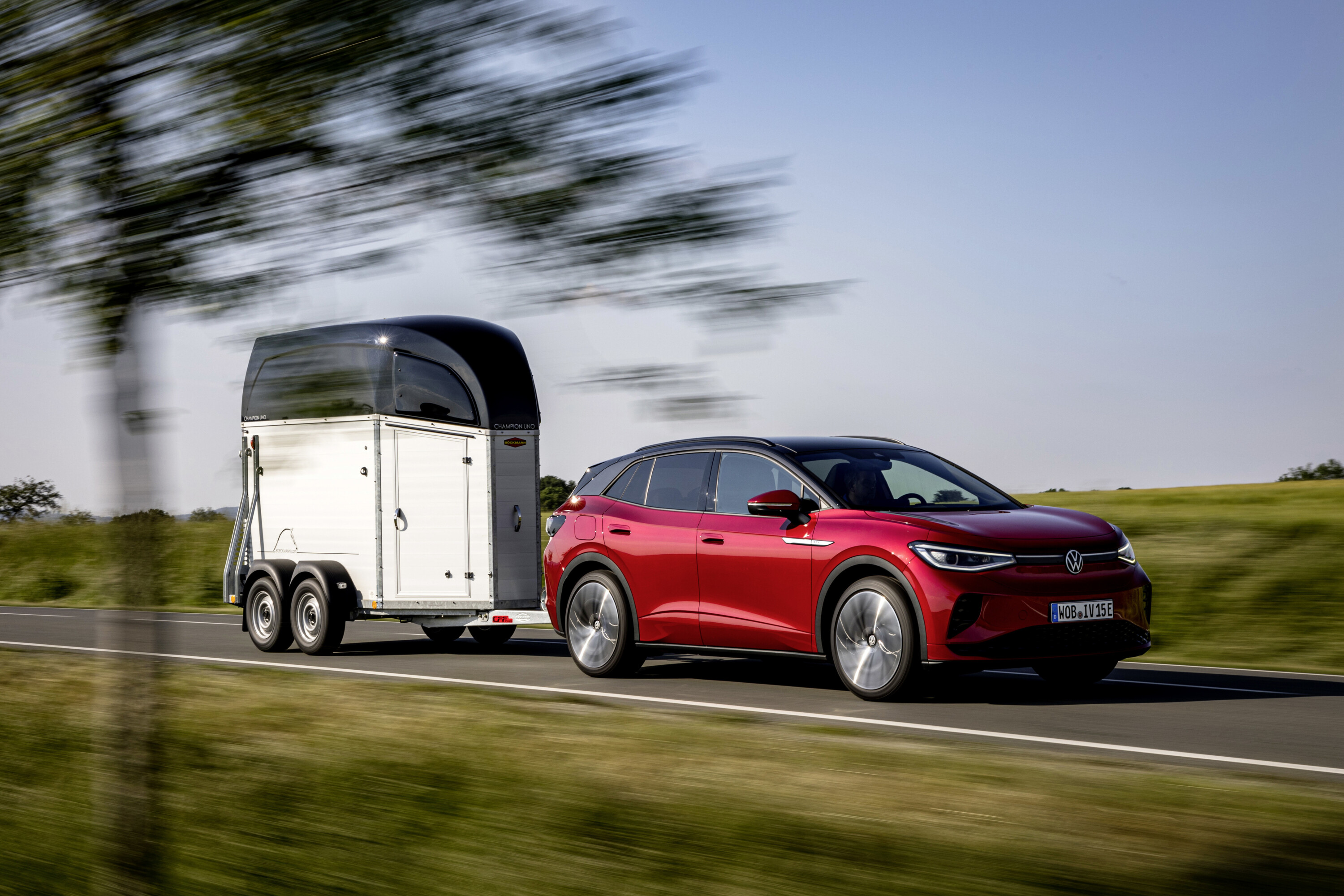
The EV towing guide: Pros & cons
Snapshot
- EVs can tow and, in some cases, itu2019s better than diesel
- But, expect a noticeable range drop, payload compromises
- Hybrid and PHEVs are viable alternatives
Diesel cars have long been seen as the best powertrain for towing, but is it the Achilles heel for electric vehicles?
Australians love the outdoors (well, some of us do) and travelling with a trailer, caravan or boat is part of the ticket of freedom to enjoy our vast history-rich land and seas.
While there are a variety of perceived concerns around driving range, public charging availability and true sustainability, is towing the ultimate barrier to owning an EV?
JUMP AHEAD
- ⚡️ Can electric cars tow?
- ⚖️ Weight and range limitations
- ? Charging with a trailer
- ? Are hybrids and PHEVs the answer?
- ? Is it time to make the electric switch?
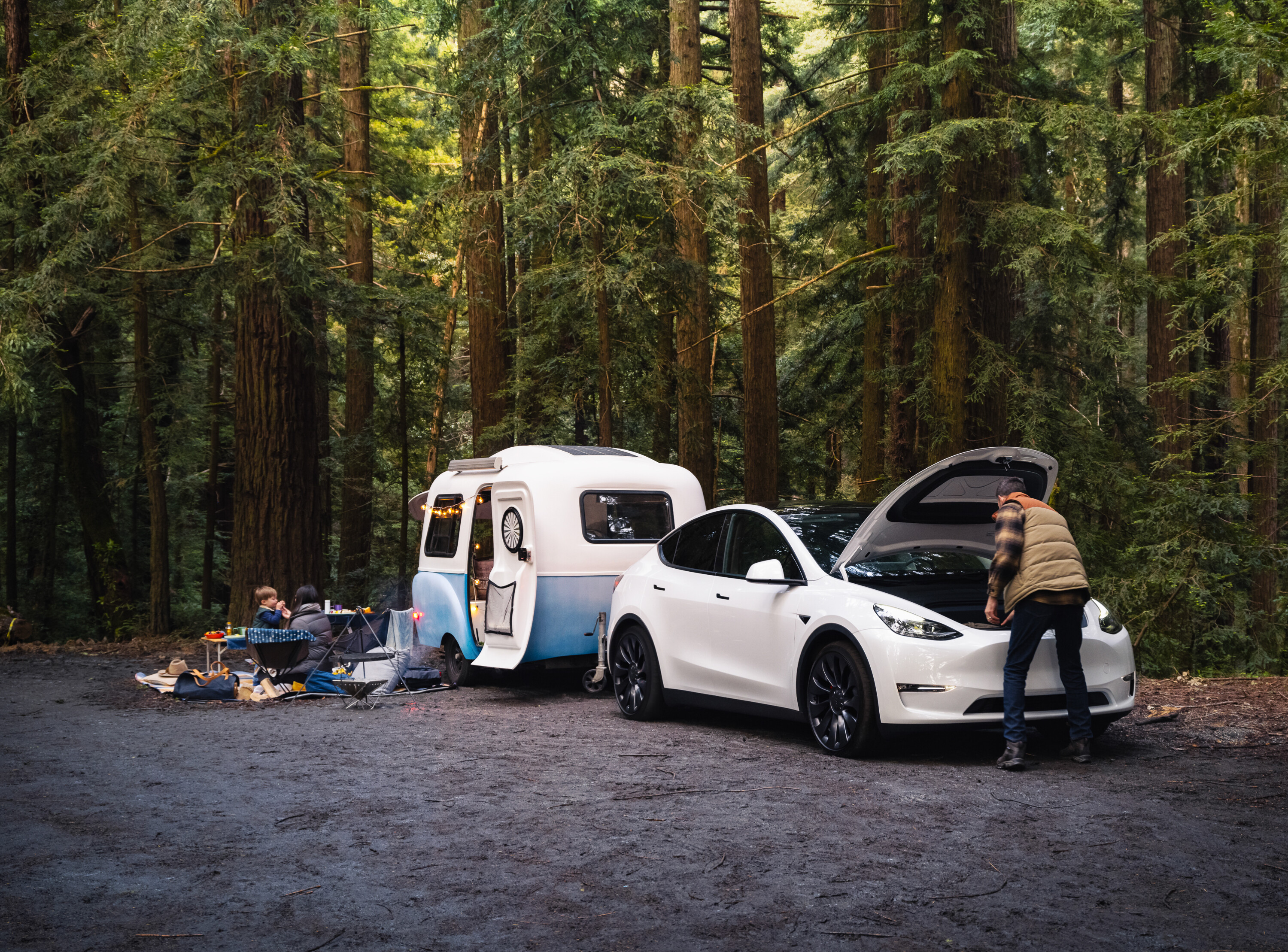
⚡️ Can electric cars tow?
Yes. In theory, electric vehicles should be ideal for towing, but the current reality shows challenges.
While traditional diesel internal combustion engines (ICE) deliver torque at a low rev band to suit towing, electric cars offer it instantly from zero revolutions per minute (rpm).
Additionally, with typically higher power and torque outputs, this makes towing almost seamless in an EV.
A range of EVs are already capable of towing. The MG 4 small car can tow up to 500kg braked and unbraked, the Tesla Model Y medium SUV at up to 1600kg braked/750kg unbraked, and both the Kia EV9 and BMW iX large SUVs are rated to lug up to 2500kg braked/750kg unbraked loads.
“It can be done”
EV owner Anneliese Alexander and her Sydney-based family of five has embarked on multiple long-distance EV road trips towing a light box trailer, including return trips to Adelaide, Lightning Ridge, and Coonabarabran.
As a former owner of a diesel-powered Mitsubishi Outlander, she said her electric Tesla Model Y RWD provides a more enjoyable long-distance driving experience.
“While a diesel car is a good towing vehicle, it’s nothing compared to the electric torque. It’s instant,” Alexander told WhichCar.
“When you’re overtaking a B-double truck, barrelling down the highway at 120km/h, I would much prefer to do it in an EV because the diesel takes a little bit of time to get to that acceleration point where you can confidently tackle it.
“It can be done [road tripping in an EV while towing]. Yes, you do have to be more organised. Yes, it does take a hit to the range. But, that doesn’t mean it’s impossible.”
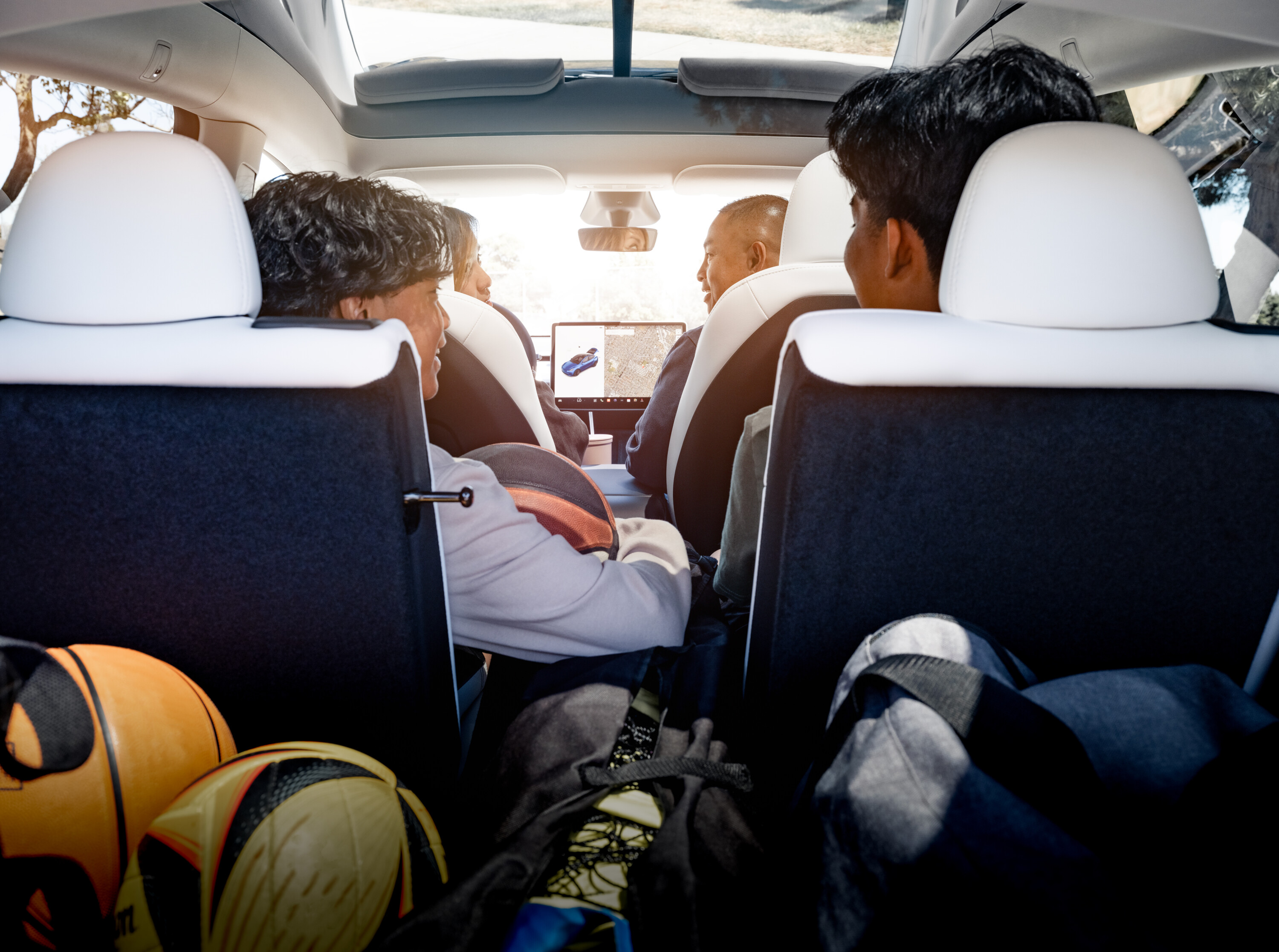
⚖️ Weight and range limitations
Since electric cars are naturally heavier, payload is more limited when towing.
Depending on the size, current battery technology adds around 300kg to 600kg of weight to an EV, which compromises the payload capabilities compared to an equivalent ICE car.
Payload includes the weight of all occupants, cargo, accessories such as roof racks, and the towball down weight which is usually ~10 per cent of the trailer weight.
In context
By pulling a heavier 2500kg braked trailer on the base BMW iX eDrive40 (the maximum rated load), you’ll only be left with 395kg of payload – with the towball download weight accounted for.
This means, you’ll be able to carry four 80kg adults in the vehicle, but not have much remaining to safely load travel bags and suitcases, and no allowance for fitting bikes or skis on a roof rack.
However, a lighter trailer enables more payload. Lugging a 1600kg braked trailer on the base Tesla Model Y RWD (the maximum limit), you’ll have around 480kg of payload available after the tow bar download is deducted.
Then, there’s the question of reduced driving range.
According to a test by Petrol Ped [YouTube ↗], towing a 1600kg caravan on the BMW iX saw the large electric SUV’s real-world driving range reduced in half as it consumed double the energy.
This is supported by Australian Electric Vehicle Association Queensland chair Jon Day [YouTube ↗], who found energy consumption can more than double if driven at higher speeds.
The test involved lugging a 1700kg boat on the highway using the Volvo XC40 Recharge small electric SUV.
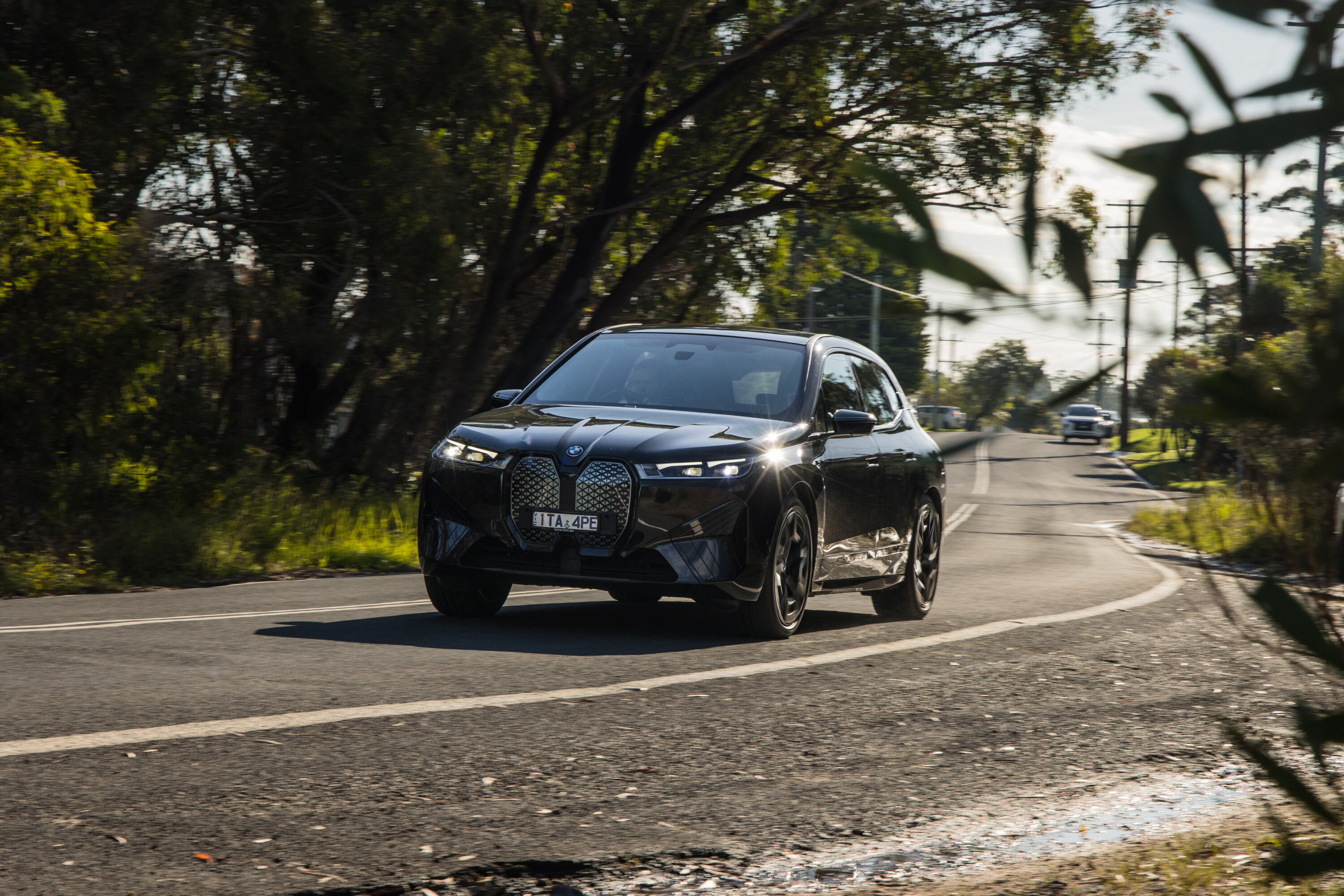
Tesla Model Y owner Anneliese Alexander told WhichCar that it also depends on the driving conditions, as going downhill will improve energy efficiency and utilise regenerative braking.
“It does take a [range] hit… You do have to be organised. You can’t just jump in and off you go. You have to think about where you’re going and how long you’re going to spend charging at each place. And, you have to be strategic about it,” Alexander said.
It’s worth noting that traditional diesel-powered vehicles can also use almost double the fuel consumption, depending on the trailer weight.
However, the advantage of ICE cars is that they typically have more driving range than EVs (with larger fuel tanks) and, when a refill is required, fuel stations are generally more available, accessible and reliable than public charging stations.
? Charging with a trailer
Unfortunately, most public EV charging stations in Australia aren’t designed to accommodate trailers, so be prepared to take more time.
Few locations offer side-mounted stalls with drive-through ability – where both the front and back of the charging spot is unobstructed – to suit those towing in an EV.
But, the majority of public chargers are positioned behind a bay and the various charging port positions on EV models makes plugging-in tricky with a trailer attached.
The best option is to unhitch the trailer in a spot nearby in order to access a charging station.
Otherwise, you may park sideways, but potentially block multiple parking or charging spaces – which is poor etiquette.
Additionally, the increased energy consumption means charging only up to 80 per cent (the recommended method) may not be ideal, as more charging stops and trailer unhitching will be required.
Therefore, you may need to wait much longer each session as charging past the 80 mark dramatically slows charging speeds to protect the battery health.
“We need [public] charging infrastructure that’s closer together.”
Tesla Model Y owner Anneliese Alexander told WhichCar the number of public charging stations needs to expand in order to accommodate towing in EVs with reduced range.
“One of the things that we found is that, at times, each charger was [about] 150 kilometres apart, which is fine generally speaking,” Alexander said.
“But, if you’re pulling a trailer and your range has been cut down to 250 kilometres, you’re not going to make that 300 kilometres… So, you need to charge every 150 kilometres, which is not really pleasant for anyone.
“We need [public] charging infrastructure that’s closer together. So if it was every 50 kilometres, for example, then I can decide to charge when I want to, not when I need to.”
Alexander added her family used camping sites’ AC power to plug in and slow charge the EV overnight, as “you just need to get to the destination and then electricity is everywhere”.
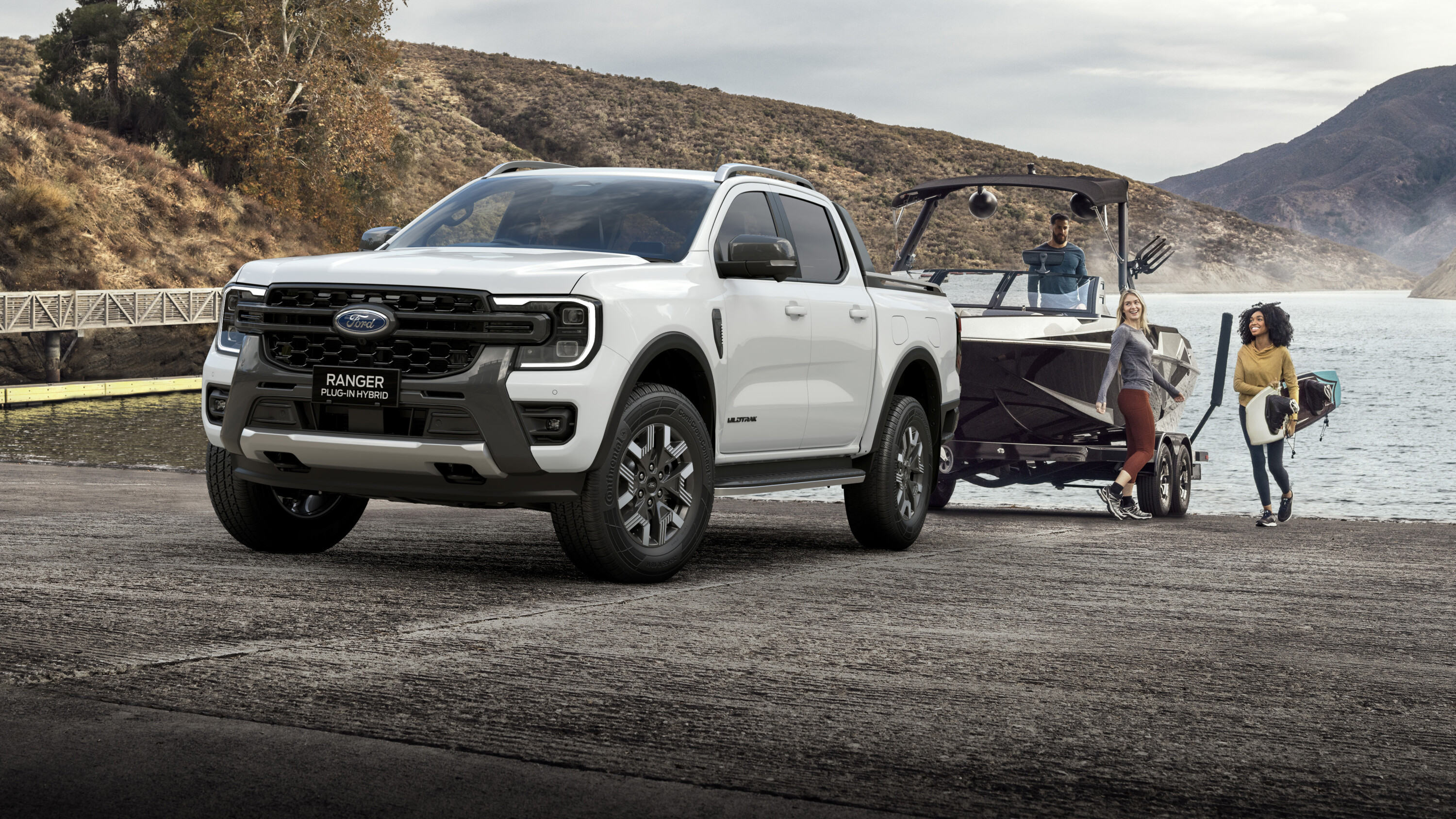
? Are hybrids and PHEVs the answer for towing?
Towing isn’t impossible in an electric car, but it’s not perfect. What are the alternatives?
British used electric car dealer R Symons still uses a diesel-powered Mitsubishi Triton to haul EV stock, and transport wheels and tyres.
The founder and director of the Hampshire-based company Richard Symons said it’s because there is no pure electric ute alternative on sale yet that can lug up to 3500kg.
“EVs are actually great for towing, but do halve the range with a trailer, so it’s not as practical quite yet. Plus, we need more drive-through chargers,” Symons told WhichCar.
The business owner added a plug-in hybrid electric vehicle (PHEV) ute wouldn’t be a viable substitute, as they only use it for towing purposes and therefore won’t be able to run on electric-only mode.
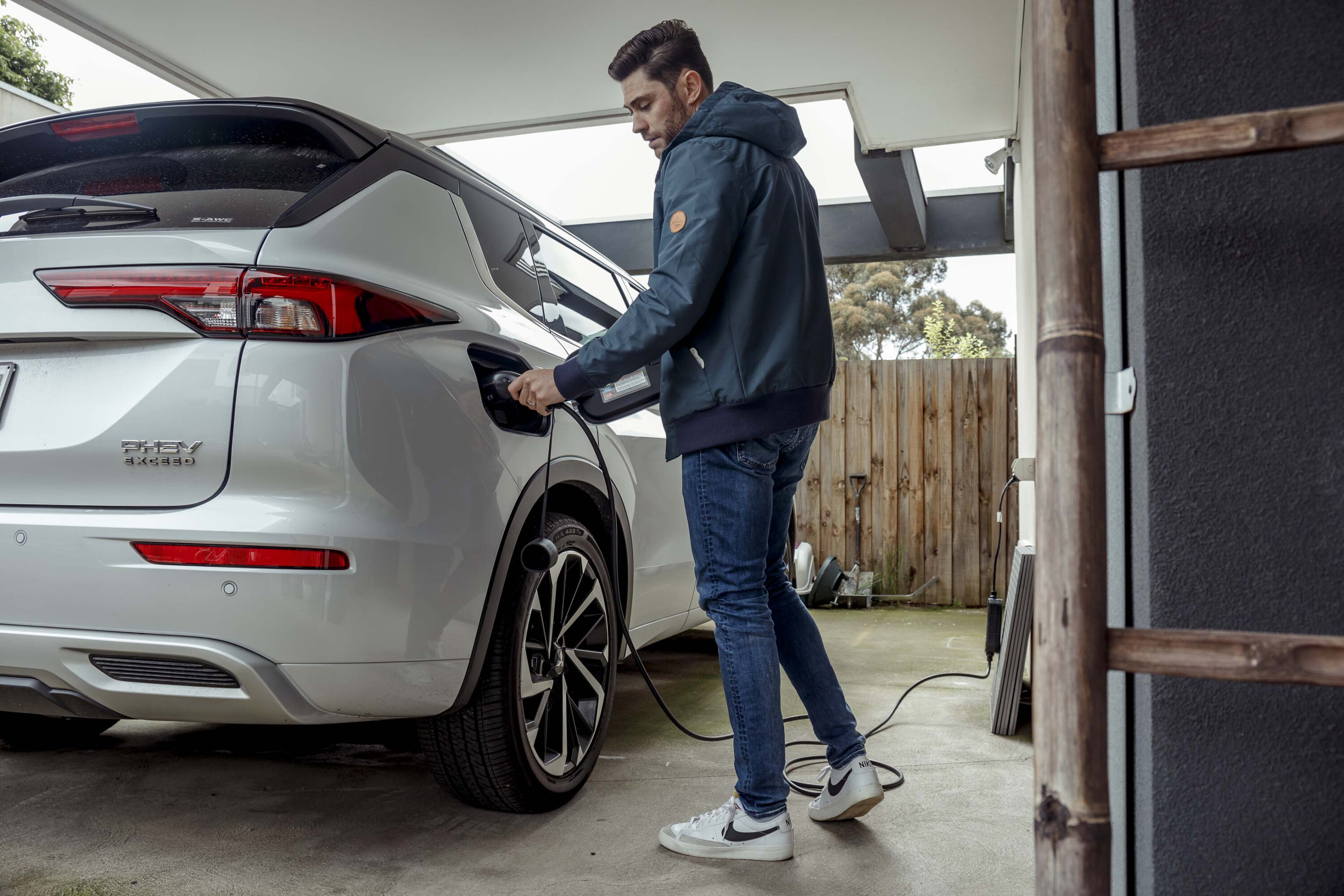
“It’s not as practical quite yet”
Most traditional hybrids and PHEVs can tow, while providing electric-only driving in some scenarios and the ability to use commonplace fuel stations for longer distance driving.
However, similar to pure EVs, there’s generally still some towing and payload capability compromises due to the added weight of the small battery and electric motor.
In context
It all depends on the model.
For traditional hybrids, the entry-level Toyota RAV4 GX medium SUV is available in three powertrains:
- Petrol-only 2WD: Up to a 800kg braked/750kg unbraked trailer with a 575kg max payload
- Hybrid 2WD: Reduces towing capability to 480kg braked and unbraked, with a 535kg payload capacity
- Hybrid AWD: Boosts towing to 1500kg braked, but has a more limited 525kg payload
Similarly, the outgoing Hyundai Santa Fe Elite diesel AWD drivetrain provides 2500kg braked / 750kg unbraked towing capacity with a 667kg payload. However, the hybrid AWD variant is limited to 1650kg, 750kg and 647kg respectively.
As for PHEVs, the five-seat Mitsubishi Outlander ES is offered in three powertrains – all of which can tow up to 1600kg braked/750kg unbraked. However:
- Petrol 2WD: Boasts the best 670kg max payload
- Petrol AWD: Reduced to 615kg payload
- PHEV AWD: Bumps up to 630kg payload
Remember: these figures don\u2019t account for the ~10 per cent<\/strong> tow bar download reduction on the payload.
Meanwhile, Ford promises the upcoming petrol-electric Ranger PHEV will have the same towing and payload capabilities as the regular diesel (which engine is still unknown), while the new Ram 1500 Ramcharger targets identical towing with only 34kg less payload, and BYD’s new petrol-electric ute is said to feature a unique hybrid setup that’s a more suitable alternative to pure diesel.
Hydrogen-powered EVs are also emerging, with hydrogen-combustion engines mooted as having no towing and payload compromises as opposed to hydrogen fuel-cells.
Synthetic fuels are on the horizon to keep ICE vehicles alive amid strict emissions reduction targets globally, but similar to hydrogen, will likely be reserved for niche applications such as long-haul utes, trucks, and supercars.
On the other hand, a new breed of aerodynamically-designed caravans with built-in electric motors are emerging to limit the range impact on pure EVs, albeit at an expensive price.
Battery technology is also improving, becoming longer range and lighter to enable more capable and attainable all-electric utes to materialise in the future, in addition to quickly expanding, more reliable public charging infrastructure.
For now, the best choice for regularly towing is still diesel.
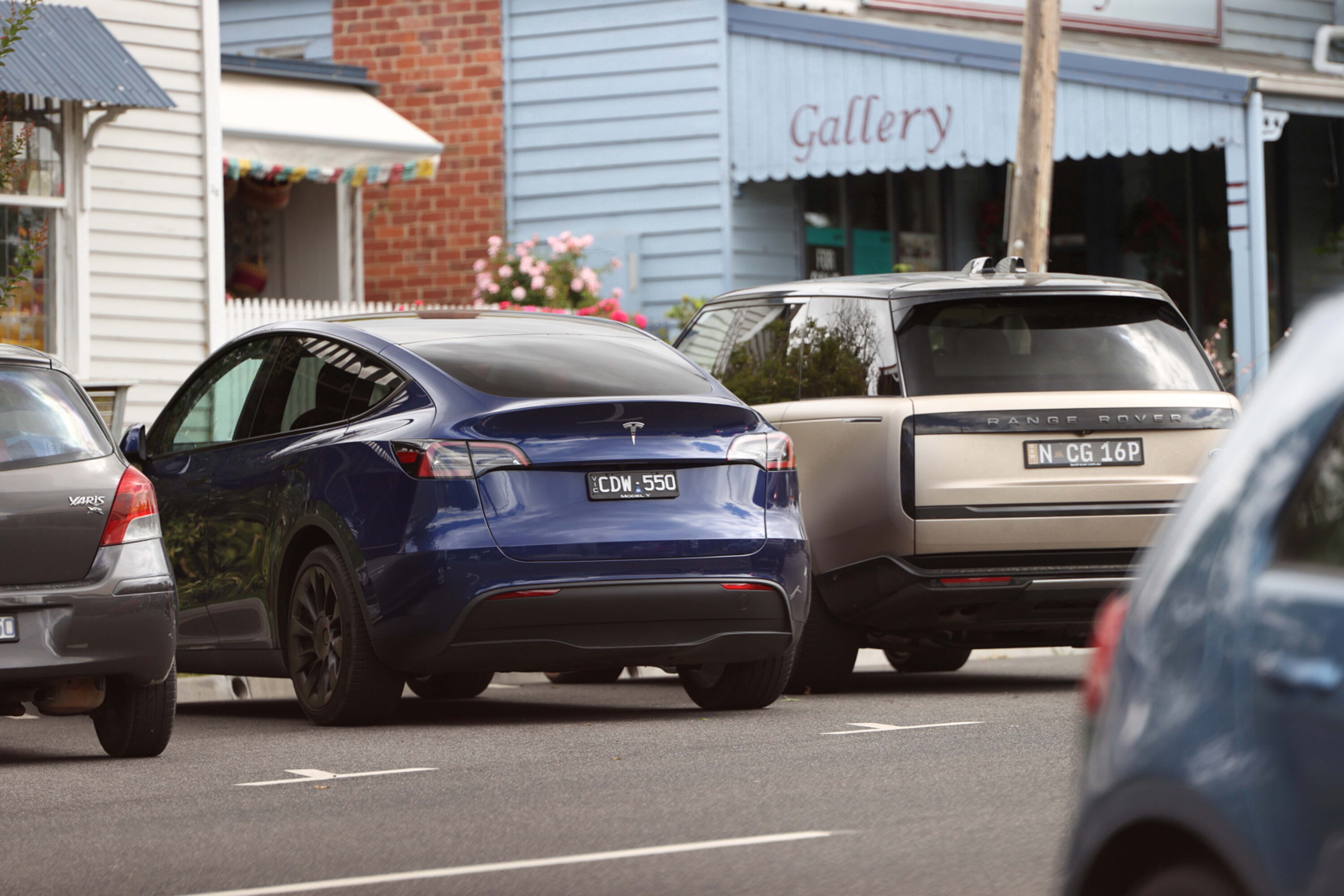
? Is it time to make the electric switch?
EVs are not for everyone (for now), but they are right for most.
Public charging reliability, charging times, and driving range remain key perceived issues. For more, check out our /Electric hub guides below.
Wheels Media thanks David Bonnici for the original version of this story.
We recommend
-
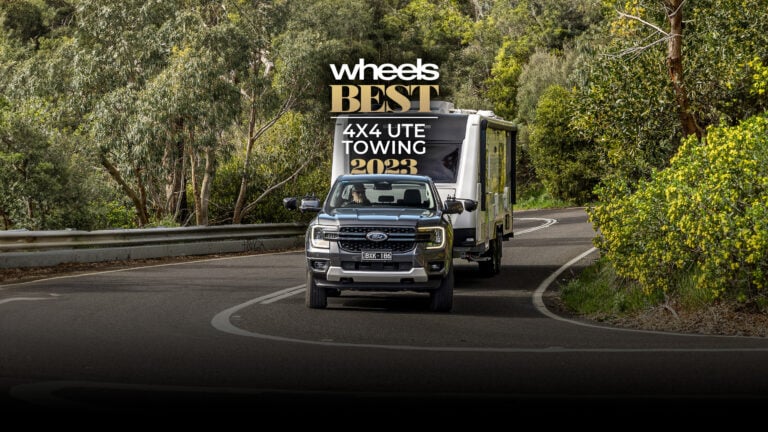 Best Utes
Best UtesBest Ute for Towing
When it comes to the important task of towing, it's a straight fight between the Ford Ranger and VW Amarok twins in the mid-size ute class.
-
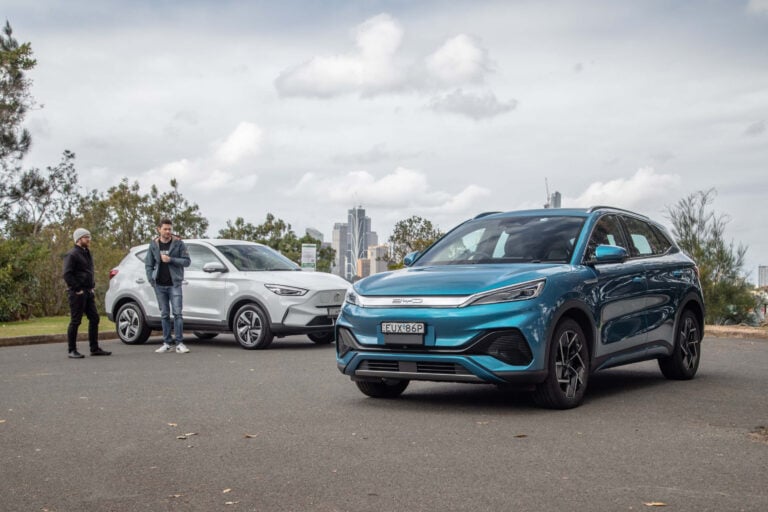 Advice
AdviceIs it time to buy an electric car? Crunching the numbers!
Is the tide turning for EVs? We've crunched the numbers on how much you could save by making the electric switch




